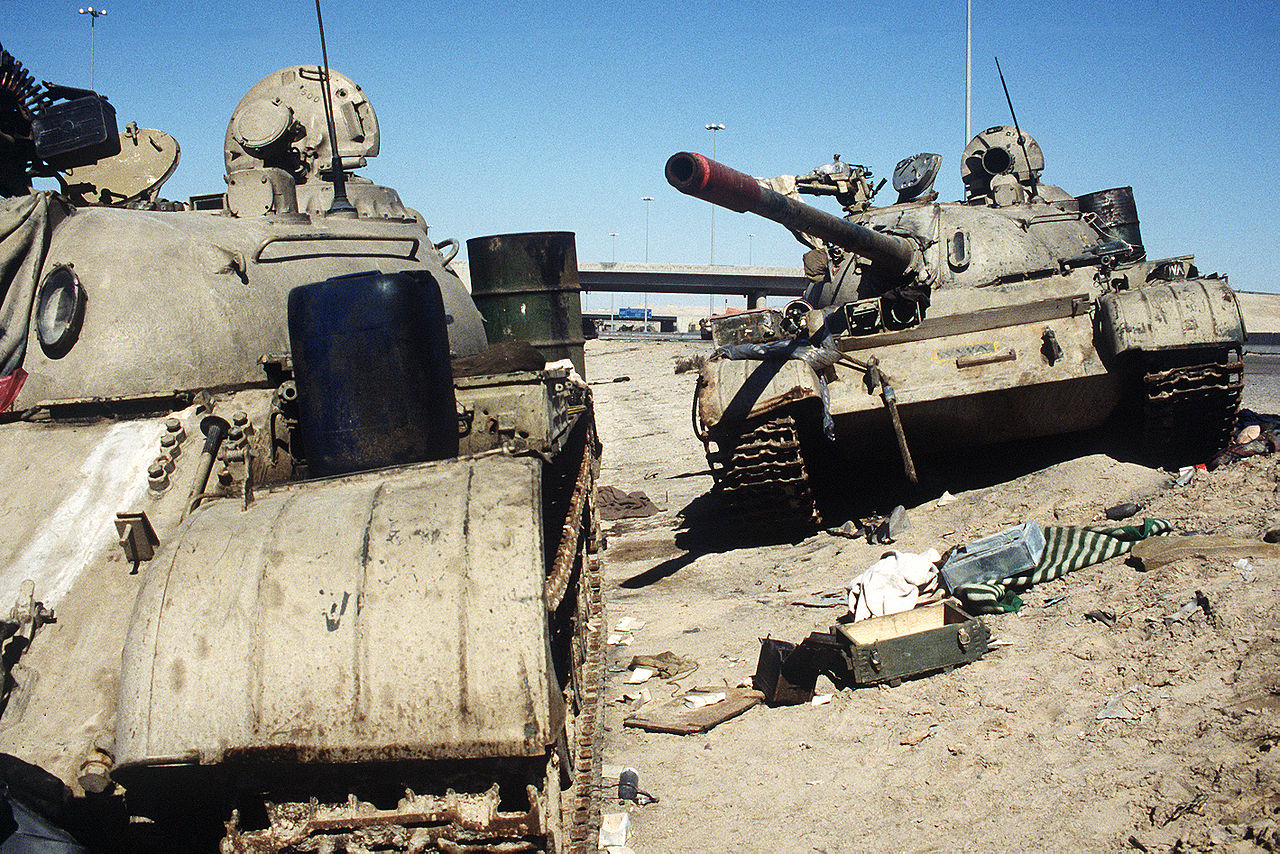As has been the case since time immemorial, history is almost always written by the victors. The United States of America’s rise to global power and dominance is a popular story, one told countless times over. However, what’s rarely seen is an Iraqi perspective of the Gulf War.
While most observers focus on Saddam’s expansionist agenda, they tend to neglect the Iraqi military, which is often a silent witness, barely considered in most histories of the war. Since the collapse of Saddam’s Ba’athist regime after the US-led invasion in 2003, the archives of Saddam’s secretive government have been laid bare for historians to pore over. It is now time for this iconic war to be revisited, and for the record to be re-examined. After all, this war was so devastating to the Iraqi military and state, it became etched into the Iraqi conscience as ‘The Mother of Battles’.
After the Iran-Iraq War between 1980 and 1988, the Iraqi military was regionally viewed in much the same light as the Prussian military was among the Europeans after Moltke the Elder’s successful campaigns in 1866-71. The Iraqi Army had developed a reputation for endurance, steadfastness and professionalism after its operations with Iran towards the end of the war that allowed Iraq to emerge victorious, if only just. At least compared to other Arab armies, who suffered a slew of defeats at the hands of Israel, the Iraqi Army came to be feared and respected.
This reputation was soon to be tested, this time against the military might of the Western world led by the only global superpower – the United States of America.
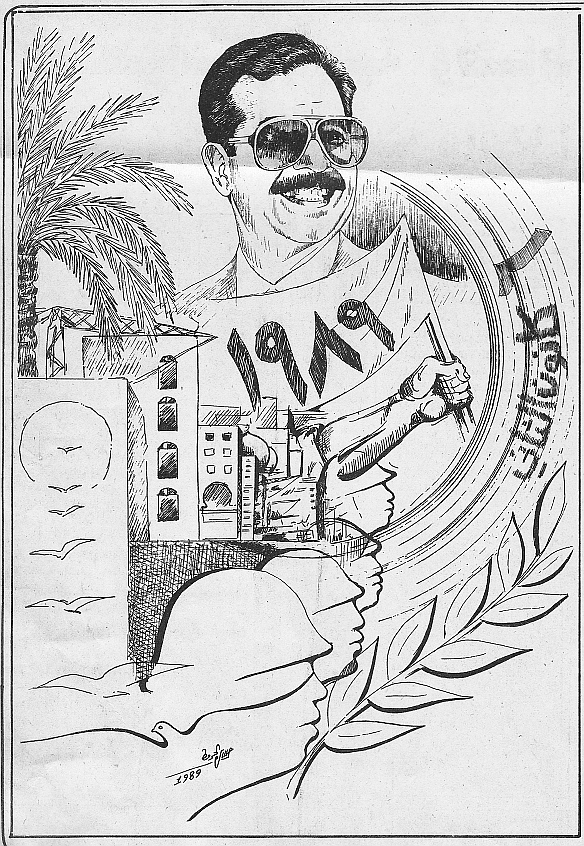
Kuwait – Iraq’s 19th province
Since Iraq gained at least nominal independence from British colonial rule, it had made territorial claims over the country of Kuwait, believing it to be an integral part of its southern Basra region. After a bloody struggle with the Ayatollahs, Saddam’s coffers were empty and the state was saddled with immense debts of $30 billion to neighbouring Arab Gulf countries alone. With a tanking economy and decreasing oil revenue, resulting from an increase in his Arab neighbours’ oil production that deflated prices, Saddam was under increasing pressure to act. When he failed to get his Arab creditors to relieve Iraq’s debt burden through diplomacy, and with increasing whispers in Baghdad of a potential military coup against him, Saddam needed a show of strength and a distraction for his army all at once. He needed another war.
Saddam felt like he had been betrayed by his Arab brothers. In his eyes, Iraqi blood had been spilt for eight years in order to stop the fundamentalist Islamic Revolution of Ayatollah Khomeini from expanding into the rest of the Arab world. Rather than acknowledging Iraq’s sacrifice, Saddam and his aides believed that their Arab neighbours were trying to weaken Iraq by keeping it indebted and with a weak economy. As Iraq’s smallest neighbour, and as it shared the enormous Rumaila oil field, Kuwait was the obvious target for Iraqi ire, and would serve as a suitable demonstration of force that would browbeat the other Arabs into acquiescence. Iraq began to mobilise on 15 July 1990 and deployed troops on the Iraqi-Kuwaiti border as a last-ditch effort to intimidate the Kuwaitis into capitulating. When this failed, the invasion of Kuwait was ordered, and plans were drawn up.
Not much time was allotted for the Iraqi officers to plan their invasion. Primary responsibility for the invasion of Kuwait lay with the Republican Guard, commanded by Lieutenant General Ayad Futayyih al-Rawi. His operational plan was as follows:
- The Republican Guard’s 3rd Special Forces Brigade were to make an airborne landing in Kuwait City, the Kuwaiti capital, to capture the Emir of Kuwait’s palace and other government buildings. They would be supported by forces from the Hammurabi Armoured Division, who would be thrusting down the main road connecting Iraq and Kuwait. Meanwhile, forces from the Nebuchadnezzar Infantry Division were tasked with establishing control over Kuwait City once the Special Forces Brigade had established control over primary targets.
- A further Republican Guard infantry brigade was to penetrate Kuwait from the Iraqi town of Umm Qasr and move to gain control over the Kuwaiti island of Bubiyan, thus establishing Iraqi control north of Kuwait City.
- The Republican Guard Medina Armoured Division was to drive on Ahmadi to secure the south of Kuwait City and cut it off from the south of Kuwait. This movement was to be supported by the Adnan Infantry Division, which would secure Kuwait’s southern borders with Saudi Arabia.
After the war with Iran, Iraq had a fleet of 750 combat aircraft, which, in conjunction with the relatively small land mass of Kuwait placing airfields within easy range of Iraqi ground forces, gave them a high expectation of achieving and maintaining complete control of the skies. Such was their confidence that orders were issued to Iraqi commanders specifically instructing them to avoid destroying the Kuwaiti air force and navy, presumably so that Iraq could seize this equipment for itself.
The Kuwaiti Army was held in similarly low esteem, as a total of six brigades (one mechanised, two armoured, two commando, and a single Royal Guard brigade) were all the forces that Kuwait had to defend an area of less than 7,000 square miles against a vastly superior Iraqi force of 100,000. The Iraqis were both qualitatively and quantitatively superior to the Kuwaitis, outnumbering them by an enormous nine to one.
The invasion began in the early hours of 2 August 1990 in a two-pronged attack. Iraqi Special Forces were deployed via helicopter in Kuwait City as planned, while the Hammurabi Division drove south down Route 80 (soon to become infamous as the ‘Highway of Death’) directly towards Kuwait City. The Medina Armoured Division’s thrust came down a road slightly farther to the west, before making a hook to the east to take up the positions outlined in the Iraqi campaign plan. It was at this moment that one of the rare few clashes with Kuwaiti forces began, but it proved to be a lacklustre affair.
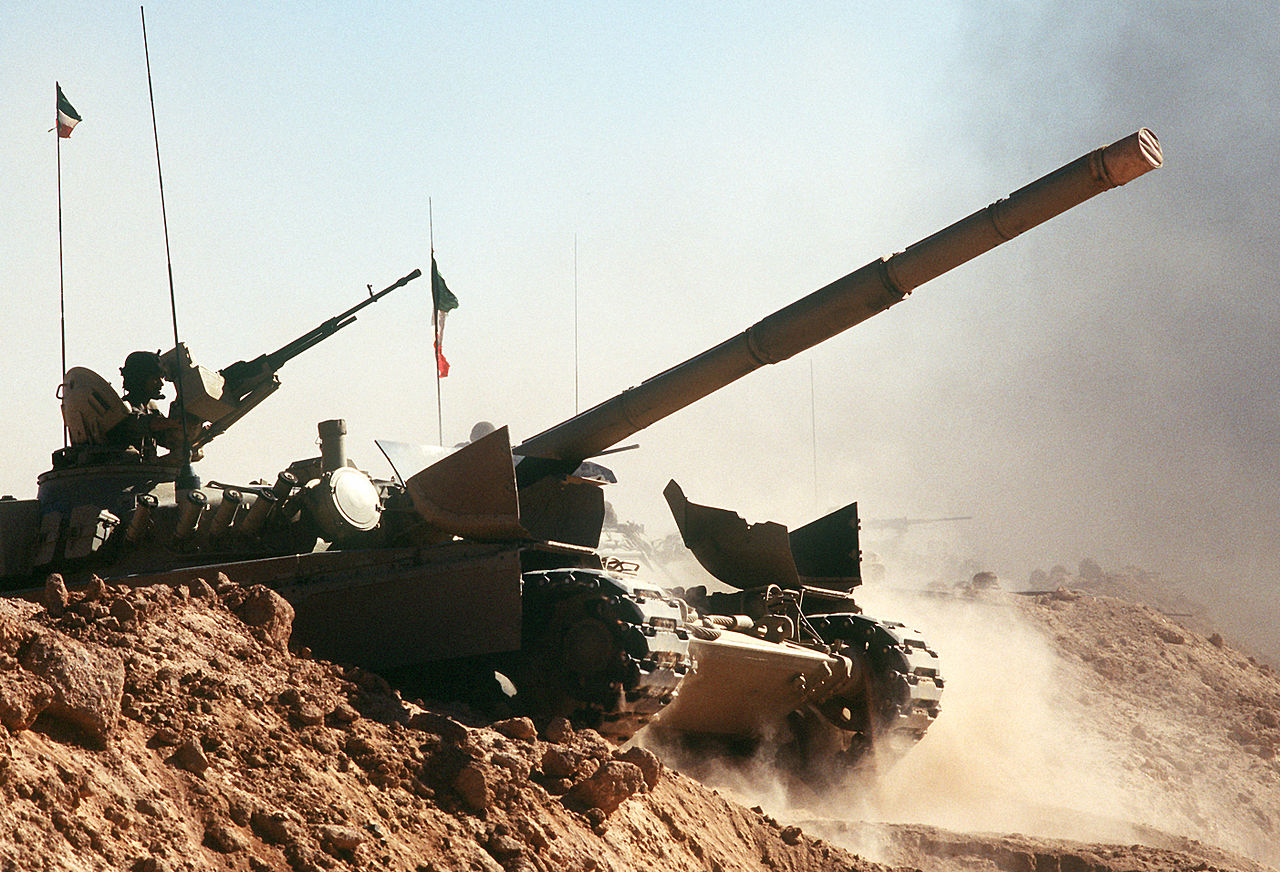
At approximately 6.45am, the Kuwaiti 35th Armoured Brigade quite literally ran afoul of elements of the Iraqi 17th Armoured Brigade, commanded by then Brigadier General Ra’ad al-Hamdani. After their British-made Chieftain tanks received a volley of Iraqi T-72 fire into their flanks, the Kuwaiti brigade melted away, returning inaccurate fire that managed to take out just one Iraqi tank in this initial action.
In personal memoirs detailing his part in the conquest of Kuwait, al-Hamdani reported that the Iraqi forces were ordered to use non-lethal rounds when firing upon Kuwaiti armour in order to minimise casualties and to scare the defending forces into surrender rather than be forced to utterly destroy them. Al-Hamdani suggests that this is because many military commanders still saw the Kuwaitis as their Arab brothers, and, considering the overwhelming number of Iraqis, saw no need to deploy disproportionate force for what was a foregone conclusion of a total Iraqi victory.
This conclusion came to pass less than 12 hours after the operation started. Apart from a small engagement with a brigade of Kuwaiti Royal Guardsmen at the Emir of Kuwait’s palace that led to the death of Fahad Al Sabah, the emir’s younger brother, Iraq was in near total control. Over the next few days, Iraqi forces consolidated their control over Kuwait and mopped up any remaining pockets of resistance before Saddam formally announced that Kuwait had “joined” Iraq as its 19th province. The Kuwaiti royal family had fled almost as soon as Iraqi forces had crossed the border, their military units were either captured or had also fled to Saudi Arabia, and Kuwait no longer existed as a sovereign state.
Although the Iraqi forces had easily conquered Kuwait, it’s highly likely they might not have celebrated their victory so eagerly had they known what kind of storm was brewing on the horizon.
The gathering Desert Storm
Immediately after Iraq invaded Kuwait, the international community, led by the United States, condemned the invasion and a series of United Nations Security Council resolutions were passed, demanding a complete Iraqi withdrawal and placing Iraq under sanctions.
Perhaps attempting to see if he could make the world blink first, Saddam refused to withdraw Iraqi forces from Kuwait, leading to a Western and allied Arab military buildup in the region. Strategically, the United States feared what would happen if Iraq launched an invasion of oil-rich Saudi Arabia, thus placing most of the world’s oil supply directly under Saddam’s control, or at the very least threatened by him. However, this was not in Saddam’s mind at all. Iraqi sources show that, at a very basic level, all Saddam wanted was to restore the Iraqi economy and he hoped to use Kuwait as a bargaining chip to obtain concessions from his neighbours and the international community. This certainly explains why the Iraqi Army sat still and watched as an international force nearing 1,000,000 soldiers and support personnel slowly amassed over a period of almost six months as a part of what was named Operation Desert Shield.
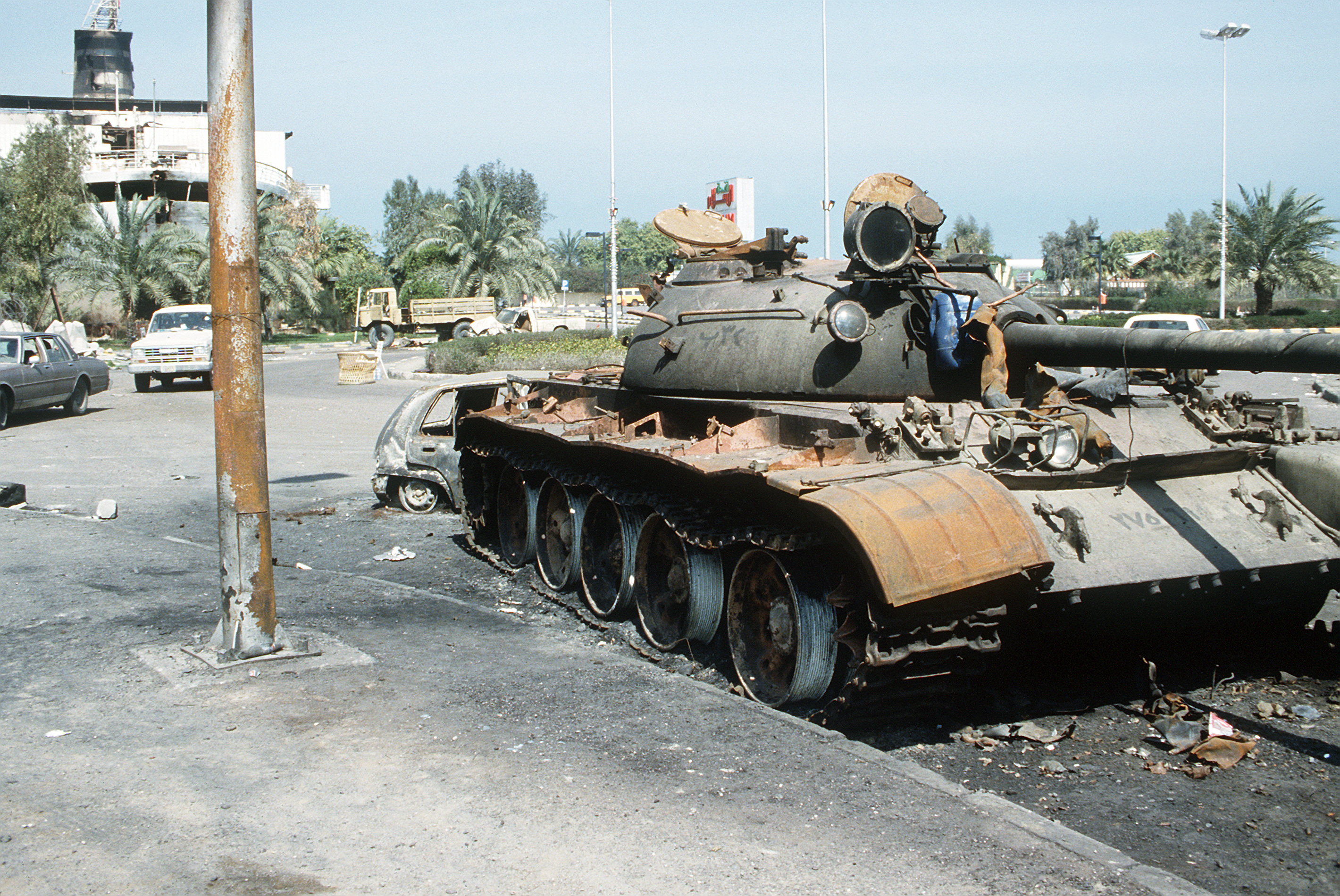
The Iraqi Army was forbidden from pre-emptively striking at the build up of the American-led Coalition Forces, and was instead left to ponder how best to weather the storm about to break over their heads. In an excellent example of how questioning Saddam’s world view was detrimental to a man’s military career, the Iraqi Army Chief of Staff, General Nizar al-Khazraji, was forced into retirement for suggesting that Iraqi forces should withdraw back to Iraq and end hostilities. The rest of the Iraqi staff officers knew that Saddam could easily take more than their jobs and already had a well-established reputation of having officers who displeased him killed. They soon presented Saddam with a defensive plan that made his strategic requirement of holding Kuwait their priority, even though they were very aware that this was a losing gambit, effectively paralysing the Iraqi military before combat operations had even begun.
Iraqi planners understood very well that the primary objective of the coalition would be to destroy as much of Iraq’s air power infrastructure as possible, including attacks on aircraft and airfields. Nonetheless, and contrary to their experiences of the Iraqi air force’s dire performance during the Iran-Iraq War, they planned to use air power to provide support to Iraqi ground forces.
The Iraqi Army was to mobilise all its reserves and prepare to deploy the majority of an army of 600,000 men into prepared, dug-in defensive positions. The Republican Guard would be used as a strategic reserve only upon the order of Saddam himself, and they were positioned just north of the Kuwaiti border with the intention that they would shore up any of the weaker Iraqi Army units.
The Iraqi plan was essentially to fight a conventional war against the best-equipped, trained and supplied conventional military force in the world. Saddam’s obsession with holding captured territory and not relinquishing it to better serve military aims stems from the way he conducted the Iraqi invasion of Iran. Rather than give up territory that was not essential to military objectives, Saddam made his soldiers fight tooth and nail for seemingly little gain. A mere few years after the Iran-Iraq War ended, and history was already repeating itself.
In a desperate attempt to even the odds, al-Hamdani claims that the Iraqi Command even authorised the use of Scud missiles as well as kamikaze pilots against coalition naval units, such as aircraft carriers. Scud missiles are notoriously inaccurate, as Iraqi attempts were to shortly prove, and even thinking of depending on suicidal pilots demonstrates the desperate situation Iraqi commanders were in.
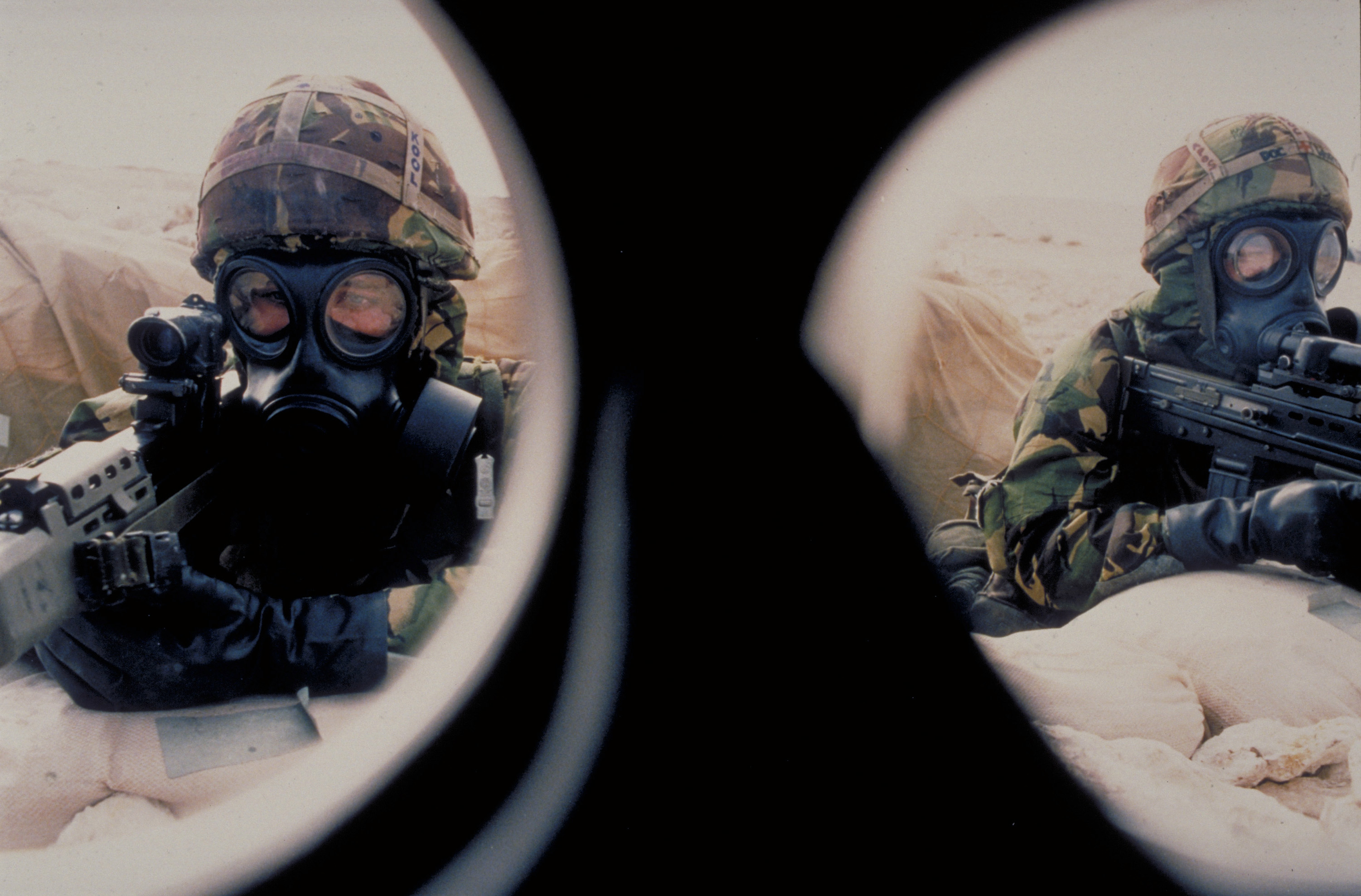
The Desert Storm breaks
Not long after Saddam failed to heed the 15 January 1991 deadline for Iraq to withdraw, Operation Desert Storm was unleashed upon Iraqi forces at 2.30 am on 17 January. For 39 days, the coalition conducted an intense strategic bombing campaign that hammered Iraqi military and civilian infrastructure, notoriously killing 408 civilians who were taking shelter in Baghdad’s Amiriyah bomb shelter.
Iraqi aircraft, air defences, early warning radar systems and Army Air Aviation units were destroyed in order to achieve complete command of the skies. The coalition’s complete dominance over the airspace made Iraqi command and control facilities easy targets and were subsequently obliterated, further crippling Iraq’s ability to mount a successful defence. Next on the hit list was the Iraqi military itself, although many Iraqi defensive positions, honed after eight years of war with Iran, proved to be successful at preserving most of the units sheltering there. All in all, more than 100,000 sorties were flown against Iraqi targets, dropping a devastating 88,500 tons of bombs.
Never wanting it to be said that the Iraqi military took a severe bombing lying down, the first real ground engagement of Desert Storm took place on 29 January – after Iraqi forces attempted an offensive to throw the coalition off balance and bring the war back down to the ground, where they hoped to fare better.
The Iraqi 5th Mechanised Division, alongside a supporting brigade from both the 3rd Armoured Division and the 1st Mechanised Division, thrust over the Kuwaiti-Saudi border to take the Saudi port town of Khafji ten kilometres away. Moments after Iraqi forces began to move, they were repeatedly hammered by coalition airstrikes. Nonetheless, the Iraqis still managed to take Khafji by bearing down upon American forces and their Saudi allies.
This victory was very short-lived, however, as throughout the next two days Iraqi forces in Khafji were besieged in the town they had just taken. Coming under heavy bombardment from American airstrikes while also fending off attacks from elements of the US 3rd Marine Regiment and the Saudi 2nd National Guard Brigade, the Iraqis were unable to reinforce their positions due to coalition air interdiction missions preventing any further significant Iraqi penetrations into Saudi territory. After resisting for two days, the Iraqis were forced to surrender and Khafji was recaptured on 1 February, with Iraqi casualties numbering 554 men.
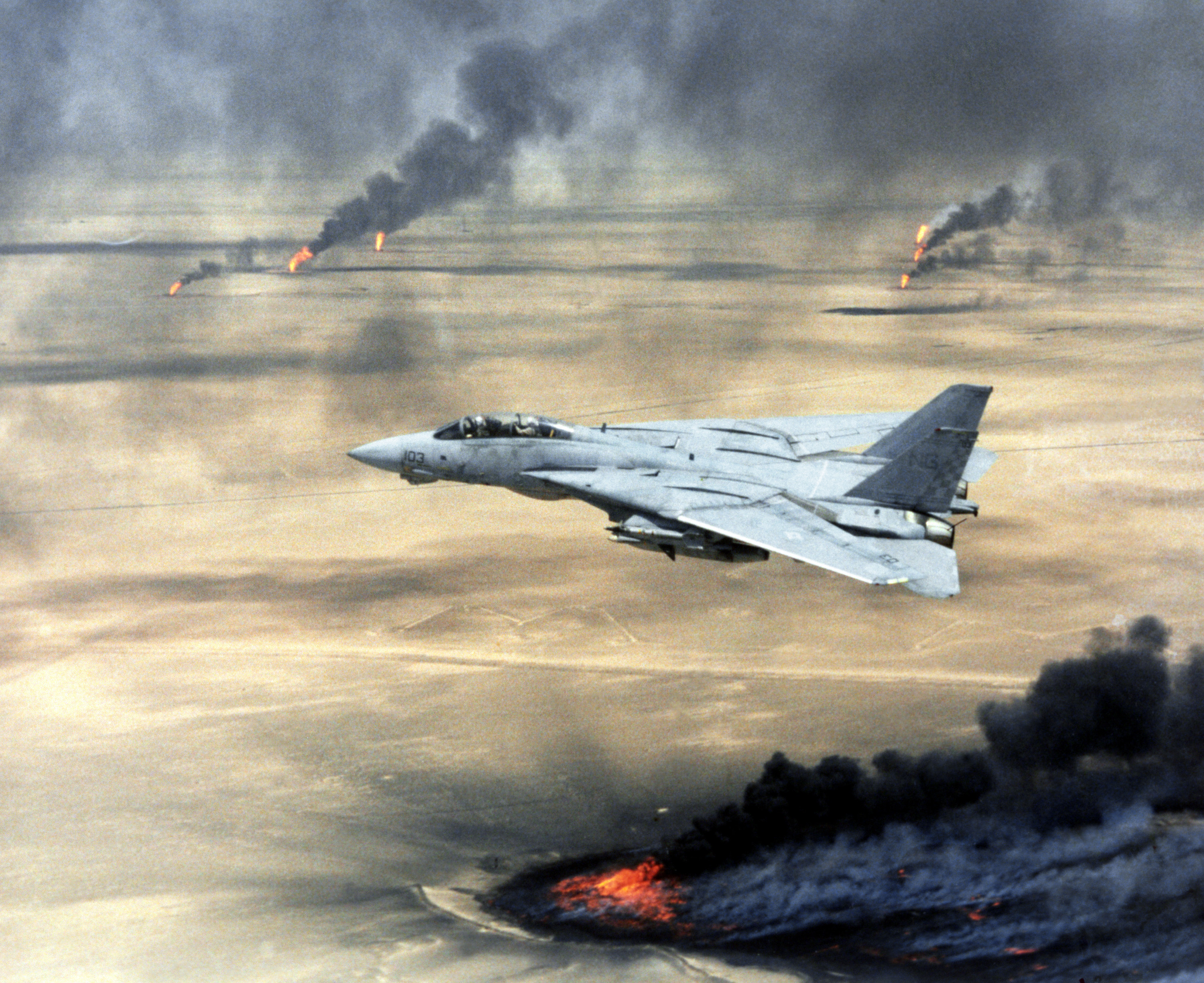
Coalition airstrikes showed no signs of letting up, and apart from the Battle of Khafji, the Iraqis made no further attempts to force the coalition into a ground war. This was not because they had given up, but simply because they were denied any opportunity. Instead, they maintained their defensive positions until coalition forces finally gave the Iraqis the land offensive they had desired for more than a month. 24 February 1991 will long be a date remembered as when the Iraqi military jumped out of the frying pan and into the fire. Over the next 100 hours, the war would be decided in favour of the coalition, with Iraq’s military forces severely damaged.
Under the overall command of US General Norman Schwarzkopf, coalition ground units launched a spearhead into Kuwait from the south after creating feints to make the Iraqis believe the coalition would invade across Iraq’s southern border with Saudi Arabia. Most Iraqi units were incredibly hungry after months of sanctions, and officers reported having to eat bread that was as hard as stone to survive. This had a devastating affect on troop morale, with soldiers surrendering en masse to attacking coalition forces.
Iraq’s border with Saudi Arabia is about 810 kilometres long, and with most of the Iraqi forces focused in static defensive positions in the south east of Iraq and inside Kuwait itself, this left the Iraqis vulnerable to being flanked. The US 7th Corps attacked from the south and fixed the Iraqi forces, and the US 18th Airborne Corps executed a large sweep farther to the west, driving into the Iraqi desert before turning east to cut off Iraqi units attempting to escape. However, the main threat to American plans was still the Republican Guard.
As Saddam’s strategic reserve, and having just sustained more than a month of airstrikes, the Republican Guard put up a valiant attempt at salvaging an impossible situation. On the last full day of fighting in Desert Storm, the Republican Guard at least were capable of being the only unit to temporarily force an American withdrawal.
The Medina Division’s 2nd Brigade had entrenched its tanks in defilade along a ridge about 36 kilometres from the Kuwaiti border to conceal their presence from the advancing US 1st Armored Division. With no air support, the Republican Guardsmen attacked ferociously, their anti-aircraft batteries able to shoot down one American A-10 bomber, which forced the American commander to temporarily withdraw his forces to a safer distance, before recommencing attack and eventually overcoming this Republican Guard force.
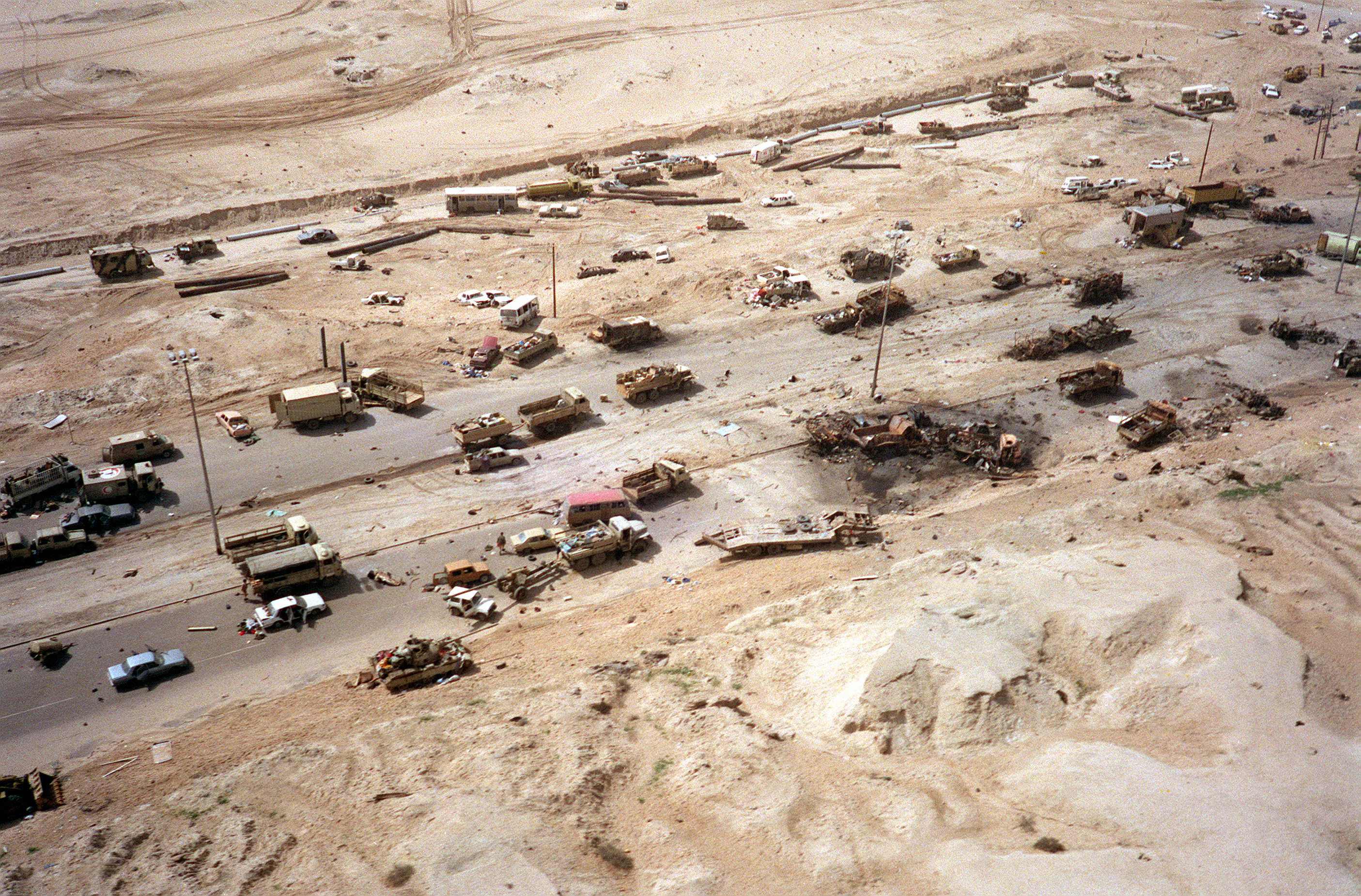
Realising the futility of continuing the war, and as he watched his forces melting away around him, Saddam called for a full withdrawal from Kuwait on 27 February. Retreating Iraqi forces fled back up Route 80, but were bombed relentlessly, creating the carnage we now know as the Highway of Death.
By the time US President Bush declared a ceasefire on 28 February, Iraqi casualties amounted to more than 200,000, including 35,000 fatalities and 63,000 soldiers captured. In comparison, the coalition’s KIA list of 341 was very light indeed. After facing down an alliance of 34 countries, hundreds of thousands of soldiers and thousands of tanks and aircraft, Iraq had lost the Gulf War. The results of Iraq’s military misadventure in the Gulf cost it not only a large part of its forces, but also led to it being placed under a merciless sanctions regime that crippled the Iraqi economy and led to the deaths of hundreds of thousands of civilians.
Desert Storm was named ‘The Mother of Battles’ because, in all its history since its foundation in 1921, the Iraqi Armed Forces had never faced such a devastating campaign of annihilation. The losses suffered by Iraq in one of the most ferocious military campaigns in history presaged the beginning of many long years of suffering that continues to this day.
For more on 20th century conflicts, subscribe to History of War for as little as £26.
